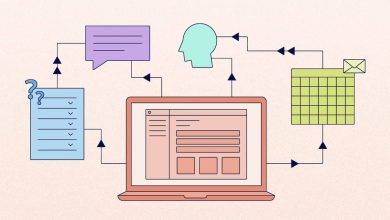The Top 7 Software Development Trends You Can’t Ignore

Software development has changed dramatically over the last 10 years, but these trends will help shape the landscape of software development in the future. Whether you’re starting out as a software developer or looking to change careers into this field, it’s important to understand how developers approach their craft and look at problems from different angles. Read on to learn about the top 7 software development trends you should know about in 2022.
1) Testing will be automated
In the past, testing was done manually by QA teams. This was a time-consuming and expensive process. With the rise of artificial intelligence and machine learning, testing can now be automated. This means that software can be released faster and with fewer bugs. Automated testing also allows for more frequent releases, which is a key part of DevOps. Developers are able to release new features quicker to customers without having to wait on quality assurance.
For example, Facebook had a team of just three engineers working on bug fixes when they introduced their new Timeline feature in 2011. They were able to release it within two weeks of being written, where it has remained successful ever since.
2) Cloud infrastructure will become even more dominant
It is one of the most prominent software development trends. If you’re not already using cloud infrastructure for your software development, now is the time to start. Cloud infrastructure is becoming increasingly dominant, and for good reason. It’s scalable, reliable, and cost-effective. There are many different types of clouds, each with its own advantages: public, private, and hybrid clouds are all widely used. Public clouds offer the benefits of scale (including large processing power) but have security risks in terms of data storage and transmission. Private clouds offer more control over data usage but are less flexible than public or hybrid clouds.
One common issue that arises when moving to a cloud environment is how it affects developers’ workflows; this will vary depending on whether they develop locally or remotely. Developers who work remotely can continue using tools like GIT with minimal changes needed, while those who develop locally will need to adapt their workflow slightly to take advantage of virtualized environments offered by cloud providers.
3) Microservices architecture will be adopted by more developers
A microservices architectural style is an approach to designing software applications as a suite of independently deployable services. In a microservices architecture, services are fine-grained and the protocols are lightweight. This approach to architecture emphasizes automated deployment, customer needs, and componentization.
Adopting a microservices architecture can be a great way to make your application more scalable, reliable, and responsive. You can hire IT professionals who are good in this field.
4) AI will become a major factor in software development
AI is already making its way into software development and it’s only going to become more prevalent. As AI gets better at understanding and completing tasks, it will be able to take on more of the work in software development. This will free up developers to focus on other aspects of the project or create new features. Additionally, AI can help with debugging and testing by finding errors that humans might miss.
5) Kotlin programming language will spread even faster than Swift did
Even if you’re not a developer, you’ve probably heard of Swift- the programming language created by Apple. What you may not have heard of is Kotlin, which is set to take the development world by storm. Created in 2010, Kotlin is a language that runs on the Java Virtual Machine and can be used for developing Android apps, server-side applications, and much more. And unlike Swift, Kotlin is already gaining popularity quickly; in fact, it’s been dubbed the Swift of Android by some.
6) R Programming language will become more popular with data scientists
In the past year, the R programming language has become increasingly popular among data scientists. This is because R is a statistical programming language that is easy to use and has a wide range of packages available. While R was traditionally used for academic research, it is now being used more and more in the industry. For example, Facebook uses R to analyze data about its users. If you’re thinking about becoming a data scientist, learning R is a good place to start.
7) Python will remain the most common programming language overall
Python has been gaining popularity in recent years and is now the most common programming language. It’s easy to learn and has a wide range of applications, making it a good choice for beginners and experienced developers alike. In the coming year, Python will continue to be the most popular language for developing software.
Conclusion
The software development landscape is constantly changing, and it can be hard to keep up. But if you want to stay ahead of the curve, these are some of the software development trends you can’t ignore. Adpot these trends by hiring the best talent through a top manpower outsourcing agency.




